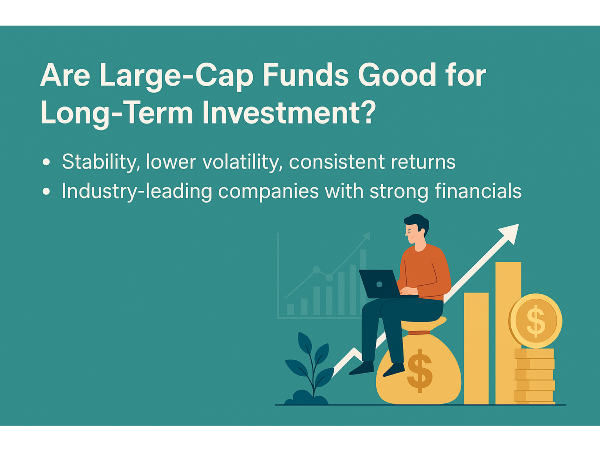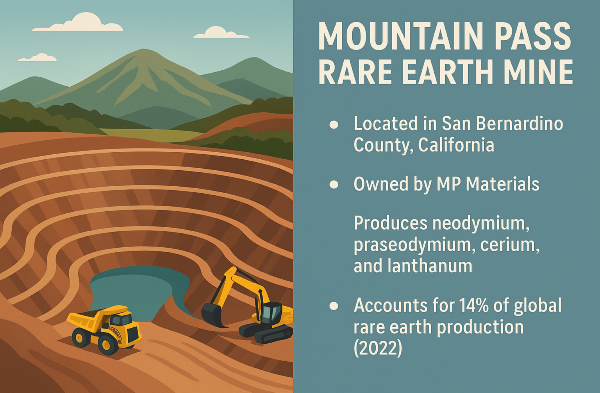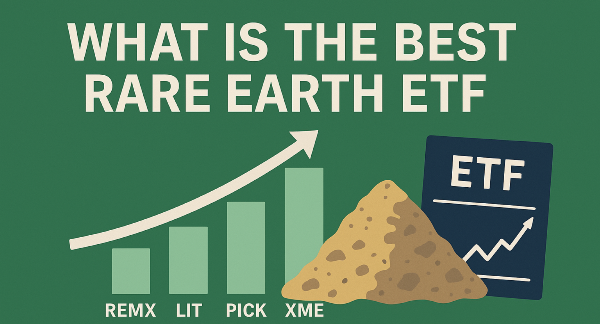Introduction
Large-cap funds focus on investing in well-established companies with a market capitalization exceeding $10 billion. These firms typically demonstrate financial stability, strong earnings potential, and consistent returns, making them attractive for long-term investors. Their lower volatility compared to mid-cap or small-cap stocks ensures a reliable foundation for wealth preservation and gradual growth. Investing in large-cap funds for the long term allows investors to capitalize on industry leaders with proven track records, benefiting from dividends, market resilience, and sustained upward trends in valuation.
Understanding Large-Cap Funds
Large-cap funds invest in companies with a market capitalization exceeding $10 billion, offering stability and consistent returns. These funds focus on industry leaders with strong financials, making them less volatile than mid-cap or small-cap investments. Large-cap stocks typically have established market positions, extensive revenue streams, and a history of profitability. Investors favor these funds for their ability to withstand economic downturns while maintaining steady growth. Companies such as Apple AAPL and Microsoft MSFT are prime examples of large-cap stocks that drive market trends and investor confidence.
Mid-cap funds invest in companies with market capitalizations between $2 billion and $10 billion, offering higher growth potential but increased volatility. Small-cap funds focus on firms with market values below $2 billion, presenting significant growth opportunities but carrying higher risk. Large-cap funds provide a balance between security and steady appreciation, making them ideal for conservative investors. Companies like Alphabet GOOGL and Berkshire Hathaway BRK.A exemplify the stability and resilience associated with large-cap investments. Investors seeking long-term wealth preservation often prefer large-cap funds due to their ability to generate reliable returns. These funds frequently include dividend-paying stocks, reinforcing their appeal for income-focused portfolios. Large-cap companies maintain strong brand recognition, global operations, and diversified revenue streams, ensuring sustained profitability.
Sources
Groww
India Infoline
FundsIndia
Benefits of Investing in Large-Cap Funds for Long-Term Growth
Large-cap funds provide stability and lower volatility, making them a preferred choice for long-term investors. These funds invest in well-established companies with strong financials, ensuring resilience during market fluctuations. Large-cap stocks tend to experience less dramatic price swings compared to mid-cap or small-cap stocks, offering a reliable foundation for portfolio growth. Companies such as Apple AAPL and Microsoft MSFT exemplify this stability, consistently delivering shareholder value through innovation and steady revenue streams. Investors seeking wealth preservation and gradual appreciation often favor large-cap funds due to their ability to withstand economic downturns while maintaining consistent performance.
Beyond stability, large-cap funds offer consistent returns and dividend payouts, reinforcing their appeal for income-focused investors. Many large-cap companies distribute dividends, providing a steady income stream alongside capital appreciation. Firms like Johnson & Johnson JNJ and Procter & Gamble PG have a history of reliable dividend payments, making them attractive for investors looking to balance growth with income generation. The combination of dividend income and long-term capital appreciation ensures that large-cap funds remain a strategic investment choice for those prioritizing financial security and sustainable returns.
Sources
Dhanvantree
Investopedia
Finance Strategists
Potential Risks and Considerations
Broader macroeconomic factors such as inflation, interest rate changes, and geopolitical events can impact large-cap stocks, leading to temporary declines in portfolio value. Even industry-leading companies experience volatility during financial crises or recessions, affecting investor confidence. Companies like JPMorgan Chase JPM and Alphabet GOOGL have historically shown resilience, but their stock prices can still fluctuate based on market conditions.
Many large-cap funds are heavily weighted toward technology, financial services, or healthcare, making them vulnerable to sector-specific disruptions. Diversification across multiple industries helps mitigate this risk, ensuring balanced exposure to different market segments. Funds that include companies like Johnson & Johnson JNJ and Procter & Gamble PG provide stability by incorporating defensive stocks that perform well even in economic downturns. A well-diversified portfolio reduces reliance on any single sector, enhancing long-term investment security.
Investors must assess their risk tolerance and investment horizon when considering large-cap funds. While these funds offer stability and consistent returns, they are not immune to market volatility. Strategic diversification and periodic portfolio rebalancing help manage risks effectively. Understanding the impact of economic cycles and sector concentration ensures informed decision-making, allowing investors to optimize their portfolios for sustained growth while minimizing exposure to downturns.
Sources
Finance Strategists
American Century
Vanguard
Comparing Large-Cap Funds with Other Investment Options
Large-cap funds are actively managed, focusing on selecting high-performing stocks within the large-cap category to generate returns above benchmark indices. In contrast, index funds passively track a specific market index, such as the S&P 500, replicating its performance without active stock selection. While large-cap funds aim to outperform the market through strategic investments, index funds provide broad market exposure with lower expense ratios. Investors seeking higher returns may prefer actively managed large-cap funds, while those prioritizing cost efficiency and diversification often opt for index funds. Active management involves fund managers making strategic decisions to optimize returns, often leading to higher fees due to research and trading costs. Passive management, on the other hand, follows a set index, reducing expenses and minimizing turnover.
Studies indicate that while some actively managed large-cap funds outperform benchmarks, many struggle to consistently beat index funds over the long term. Investors must weigh the potential for higher returns against the increased costs and risks associated with active management. Choosing between large-cap funds and index funds depends on investment goals, risk tolerance, and market outlook. Large-cap funds offer the potential for excess returns through active stock selection, while index funds provide stability and predictable performance. Investors seeking a balance between growth and cost efficiency may consider a mix of both strategies to optimize portfolio diversification.
Sources
Morningstar
U.S. News
Groww
Conclusion
Investing in large-cap funds for the long term offers a balance of stability, lower volatility, and consistent returns, making them a reliable choice for wealth preservation and gradual growth. These funds focus on industry-leading companies with strong financials, ensuring resilience against market fluctuations while maintaining profitability. While potential risks such as economic downturns and sector concentration exist, diversification and strategic portfolio management can mitigate these challenges. Understanding the differences between large-cap funds and other investment options helps investors make informed decisions, optimizing their portfolios for sustained financial success in evolving market conditions.
📌Read More About:
The Top Large Cap Stocks- https://stockbossup.com/pages/topics/large-cap
What Are Large US Cap Stocks?- https://www.stockbossup.com/pages/post/38590/what-are-large-us-cap-stocks
How Many Large Cap Stocks Are There?- https://www.stockbossup.com/pages/post/38622/how-many-large-cap-stocks-are-there
Should I Only Invest in Large-Cap?- https://stockbossup.com/pages/post/38619/should-i-invest-in-large-cap-or-mid-cap




























Introduction
Large-cap funds focus on investing in well-established companies with a market capitalization exceeding $10 billion. These firms typically demonstrate financial stability, strong earnings potential, and consistent returns, making them attractive for long-term investors. Their lower volatility compared to mid-cap or small-cap stocks ensures a reliable foundation for wealth preservation and gradual growth. Investing in large-cap funds for the long term allows investors to capitalize on industry leaders with proven track records, benefiting from dividends, market resilience, and sustained upward trends in valuation.
Understanding Large-Cap Funds
Large-cap funds invest in companies with a market capitalization exceeding $10 billion, offering stability and consistent returns. These funds focus on industry leaders with strong financials, making them less volatile than mid-cap or small-cap investments. Large-cap stocks typically have established market positions, extensive revenue streams, and a history of profitability. Investors favor these funds for their ability to withstand economic downturns while maintaining steady growth. Companies such as Apple AAPL and Microsoft MSFT are prime examples of large-cap stocks that drive market trends and investor confidence.
Mid-cap funds invest in companies with market capitalizations between $2 billion and $10 billion, offering higher growth potential but increased volatility. Small-cap funds focus on firms with market values below $2 billion, presenting significant growth opportunities but carrying higher risk. Large-cap funds provide a balance between security and steady appreciation, making them ideal for conservative investors. Companies like Alphabet GOOGL and Berkshire Hathaway BRK.A exemplify the stability and resilience associated with large-cap investments. Investors seeking long-term wealth preservation often prefer large-cap funds due to their ability to generate reliable returns. These funds frequently include dividend-paying stocks, reinforcing their appeal for income-focused portfolios. Large-cap companies maintain strong brand recognition, global operations, and diversified revenue streams, ensuring sustained profitability.
Sources
Groww
India Infoline
FundsIndia
Benefits of Investing in Large-Cap Funds for Long-Term Growth
Large-cap funds provide stability and lower volatility, making them a preferred choice for long-term investors. These funds invest in well-established companies with strong financials, ensuring resilience during market fluctuations. Large-cap stocks tend to experience less dramatic price swings compared to mid-cap or small-cap stocks, offering a reliable foundation for portfolio growth. Companies such as Apple AAPL and Microsoft MSFT exemplify this stability, consistently delivering shareholder value through innovation and steady revenue streams. Investors seeking wealth preservation and gradual appreciation often favor large-cap funds due to their ability to withstand economic downturns while maintaining consistent performance.
Beyond stability, large-cap funds offer consistent returns and dividend payouts, reinforcing their appeal for income-focused investors. Many large-cap companies distribute dividends, providing a steady income stream alongside capital appreciation. Firms like Johnson & Johnson JNJ and Procter & Gamble PG have a history of reliable dividend payments, making them attractive for investors looking to balance growth with income generation. The combination of dividend income and long-term capital appreciation ensures that large-cap funds remain a strategic investment choice for those prioritizing financial security and sustainable returns.
Sources
Dhanvantree
Investopedia
Finance Strategists
Potential Risks and Considerations
Broader macroeconomic factors such as inflation, interest rate changes, and geopolitical events can impact large-cap stocks, leading to temporary declines in portfolio value. Even industry-leading companies experience volatility during financial crises or recessions, affecting investor confidence. Companies like JPMorgan Chase JPM and Alphabet GOOGL have historically shown resilience, but their stock prices can still fluctuate based on market conditions.
Many large-cap funds are heavily weighted toward technology, financial services, or healthcare, making them vulnerable to sector-specific disruptions. Diversification across multiple industries helps mitigate this risk, ensuring balanced exposure to different market segments. Funds that include companies like Johnson & Johnson JNJ and Procter & Gamble PG provide stability by incorporating defensive stocks that perform well even in economic downturns. A well-diversified portfolio reduces reliance on any single sector, enhancing long-term investment security.
Investors must assess their risk tolerance and investment horizon when considering large-cap funds. While these funds offer stability and consistent returns, they are not immune to market volatility. Strategic diversification and periodic portfolio rebalancing help manage risks effectively. Understanding the impact of economic cycles and sector concentration ensures informed decision-making, allowing investors to optimize their portfolios for sustained growth while minimizing exposure to downturns.
Sources
Finance Strategists
American Century
Vanguard
Comparing Large-Cap Funds with Other Investment Options
Large-cap funds are actively managed, focusing on selecting high-performing stocks within the large-cap category to generate returns above benchmark indices. In contrast, index funds passively track a specific market index, such as the S&P 500, replicating its performance without active stock selection. While large-cap funds aim to outperform the market through strategic investments, index funds provide broad market exposure with lower expense ratios. Investors seeking higher returns may prefer actively managed large-cap funds, while those prioritizing cost efficiency and diversification often opt for index funds. Active management involves fund managers making strategic decisions to optimize returns, often leading to higher fees due to research and trading costs. Passive management, on the other hand, follows a set index, reducing expenses and minimizing turnover.
Studies indicate that while some actively managed large-cap funds outperform benchmarks, many struggle to consistently beat index funds over the long term. Investors must weigh the potential for higher returns against the increased costs and risks associated with active management. Choosing between large-cap funds and index funds depends on investment goals, risk tolerance, and market outlook. Large-cap funds offer the potential for excess returns through active stock selection, while index funds provide stability and predictable performance. Investors seeking a balance between growth and cost efficiency may consider a mix of both strategies to optimize portfolio diversification.
Sources
Morningstar
U.S. News
Groww
Conclusion
Investing in large-cap funds for the long term offers a balance of stability, lower volatility, and consistent returns, making them a reliable choice for wealth preservation and gradual growth. These funds focus on industry-leading companies with strong financials, ensuring resilience against market fluctuations while maintaining profitability. While potential risks such as economic downturns and sector concentration exist, diversification and strategic portfolio management can mitigate these challenges. Understanding the differences between large-cap funds and other investment options helps investors make informed decisions, optimizing their portfolios for sustained financial success in evolving market conditions.
📌Read More About:
The Top Large Cap Stocks- https://stockbossup.com/pages/topics/large-cap
What Are Large US Cap Stocks?- https://www.stockbossup.com/pages/post/38590/what-are-large-us-cap-stocks
How Many Large Cap Stocks Are There?- https://www.stockbossup.com/pages/post/38622/how-many-large-cap-stocks-are-there
Should I Only Invest in Large-Cap?- https://stockbossup.com/pages/post/38619/should-i-invest-in-large-cap-or-mid-cap